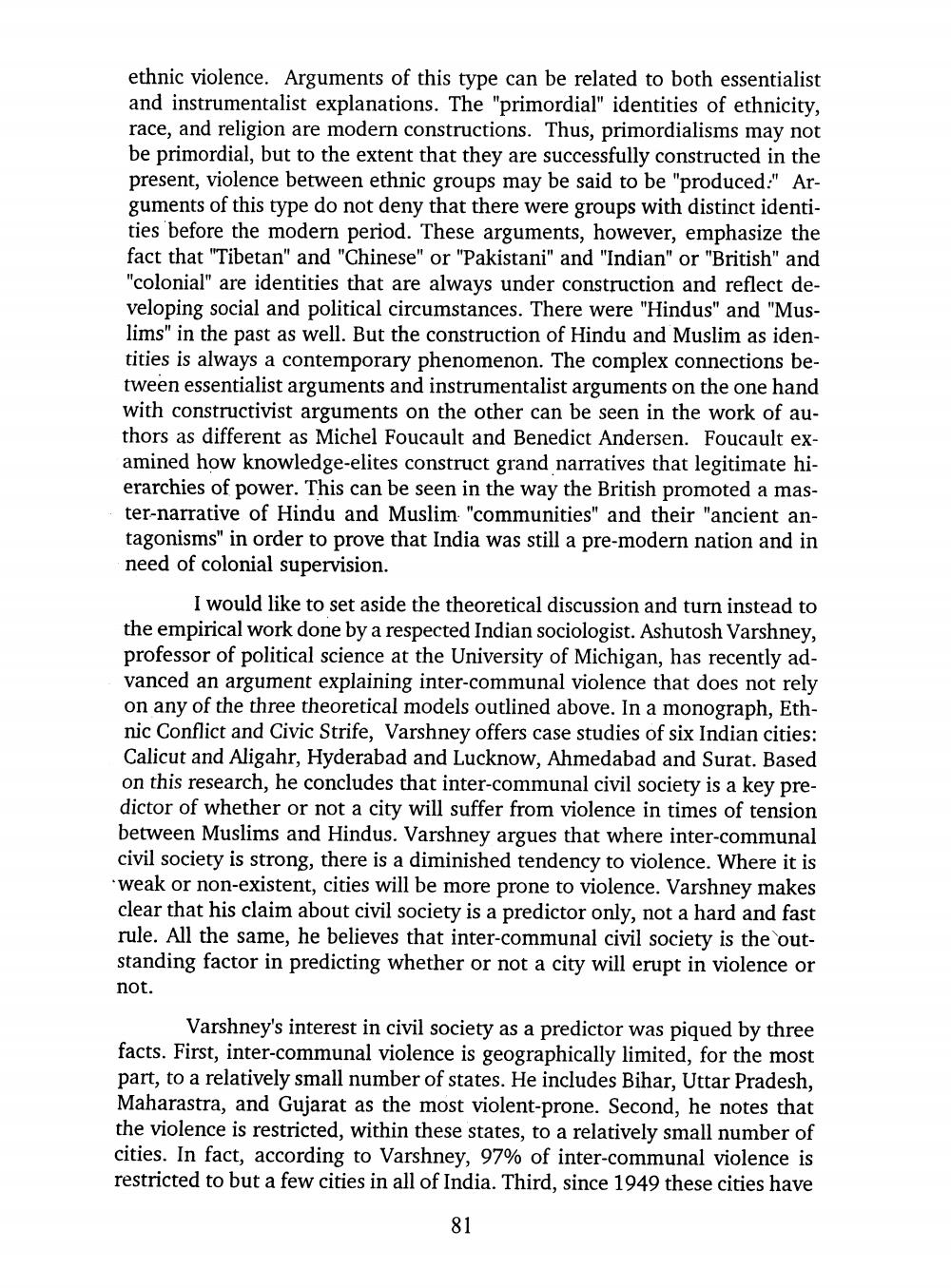________________
ethnic violence. Arguments of this type can be related to both essentialist and instrumentalist explanations. The "primordial" identities of ethnicity, race, and religion are modern constructions. Thus, primordialisms may not be primordial, but to the extent that they are successfully constructed in the present, violence between ethnic groups may be said to be "produced" Arguments of this type do not deny that there were groups with distinct identities before the modern period. These arguments, however, emphasize the fact that "Tibetan" and "Chinese" or "Pakistani" and "Indian" or "British" and "colonial" are identities that are always under construction and reflect developing social and political circumstances. There were "Hindus" and "Muslims" in the past as well. But the construction of Hindu and Muslim as identities is always a contemporary phenomenon. The complex connections between essentialist arguments and instrumentalist arguments on the one hand with constructivist arguments on the other can be seen in the work of authors as different as Michel Foucault and Benedict Andersen. Foucault examined how knowledge-elites construct grand narratives that legitimate hierarchies of power. This can be seen in the way the British promoted a master-narrative of Hindu and Muslim: "communities" and their "ancient antagonisms" in order to prove that India was still a pre-modern nation and in need of colonial supervision.
I would like to set aside the theoretical discussion and turn instead to the empirical work done by a respected Indian sociologist. Ashutosh Varshney, professor of political science at the University of Michigan, has recently advanced an argument explaining inter-communal violence that does not rely on any of the three theoretical models outlined above. In a monograph, Ethnic Conflict and Civic Strife, Varshney offers case studies of six Indian cities: Calicut and Aligahr, Hyderabad and Lucknow, Ahmedabad and Surat. Based on this research, he concludes that inter-communal civil society is a key predictor of whether or not a city will suffer from violence in times of tension between Muslims and Hindus. Varshney argues that where inter-communal civil society is strong, there is a diminished tendency to violence. Where it is 'weak or non-existent, cities will be more prone to violence. Varshney makes clear that his claim about civil society is a predictor only, not a hard and fast rule. All the same, he believes that inter-communal civil society is the outstanding factor in predicting whether or not a city will erupt in violence or not.
Varshney's interest in civil society as a predictor was piqued by three facts. First, inter-communal violence is geographically limited, for the most part, to a relatively small number of states. He includes Bihar, Uttar Pradesh, Maharastra, and Gujarat as the most violent-prone. Second, he notes that the violence is restricted, within these states, to a relatively small number of cities. In fact, according to Varshney, 97% of inter-communal violence is restricted to but a few cities in all of India. Third, since 1949 these cities have
81




